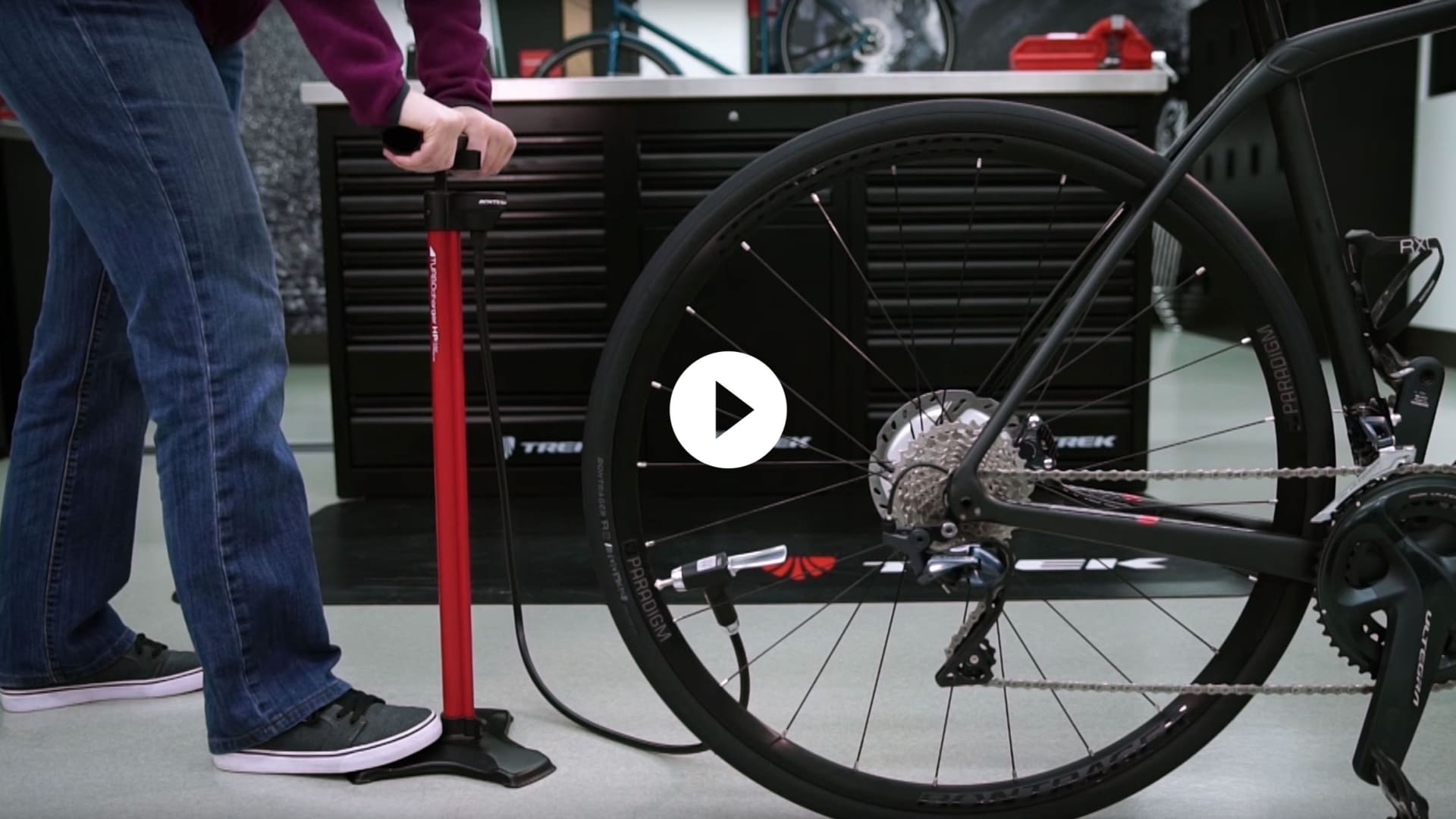Bombas mais vendidas
Bomba de Pé Bontrager TLR Flash Charger
Comprar agoraBomba de Chão Bontrager Dual Charger
Comprar agoraInstruções passo-a-passo
Antes de começares, temos de avisar-te que limpar a tua corrente é um trabalho sujo. Portanto, tira o fato de cerimónia, calça umas luvas e mãos à obra!
1. Determina qual a pressão correta do pneu. Todos os pneus Bontrager têm o intervalo de pressão recomendada na parede lateral do pneu.
2. Verifica se a bomba é compatível com o tipo de válvula dos teus pneus. Todos os pneus vêm com válvulas Schrader ou Presta e a maioria das bombas Bontrager são compatíveis com ambas. Se a tua bomba não é compatível, podes adquirir um adaptador na tua loja.
3. Se as tuas válvulas tiverem tampas, remove-as.
4. Se estás a utilizar uma válvula Schrader, estás pronto para começar a encher.
5. Se estás a utilizar uma válvula Presta, desenrosca a sua extremidade para a abrir. Consegues perceber quando fica solta o suficiente ao empurrar para dentro o núcleo da válvula. Se sentires ar a sair, estás pronto para começar a encher.
6. Fixa a bomba com firmeza na válvula ao empurrar a cabeça da bomba para baixo até onde conseguires. Depois, bloqueia a cabeça da bomba levantando a alavanca da mesma.
7. Oscila a cabeça Se sentes que a válvula se move lá dentro, é porque não está bem fixa e precisas de empurrar a cabeça um pouco mais para baixo.
8. Quando a bomba estiver bem fixa, começa a encher. Se ouvires ar a sibilar à medida que enches, quer dizer que a cabeça ainda não está bem fixa. Repete o passo 7 e tenta de novo.
9. Mantém-te atento ao manómetro enquanto enches os pneus. Assim que atingires um valor dentro do intervalo que consta na parede lateral do pneu, podes parar de encher.
10. Solta a cabeça da bomba ao pressionar para baixo a alavanca e puxa a cabeça da válvula rapidamente. Se estás a utilizar uma válvula Presta, não te esqueças de a fechar.
11. Fixa a bomba com firmeza na válvula ao empurrar a cabeça da bomba para baixo até onde conseguires. Depois, bloqueia a cabeça da bomba levantando a alavanca da mesma.
Agora que és perito em pressão de pneus, lembra-te de verificar sempre os pneus antes de saíres para pedalar. Isto é tão fácil como dar-lhes um pequeno apertão com a tua mão ou utilizar o manómetro de pressão para garantir que vais ter a melhor volta possível. Outra coisa que também deves considerar é levar no bolso da tua camisola de ciclismo ou na bicicleta um cartucho de CO2 para quando os teus pneus precisam de um pouco mais de ar quando já estás a pedalar.
